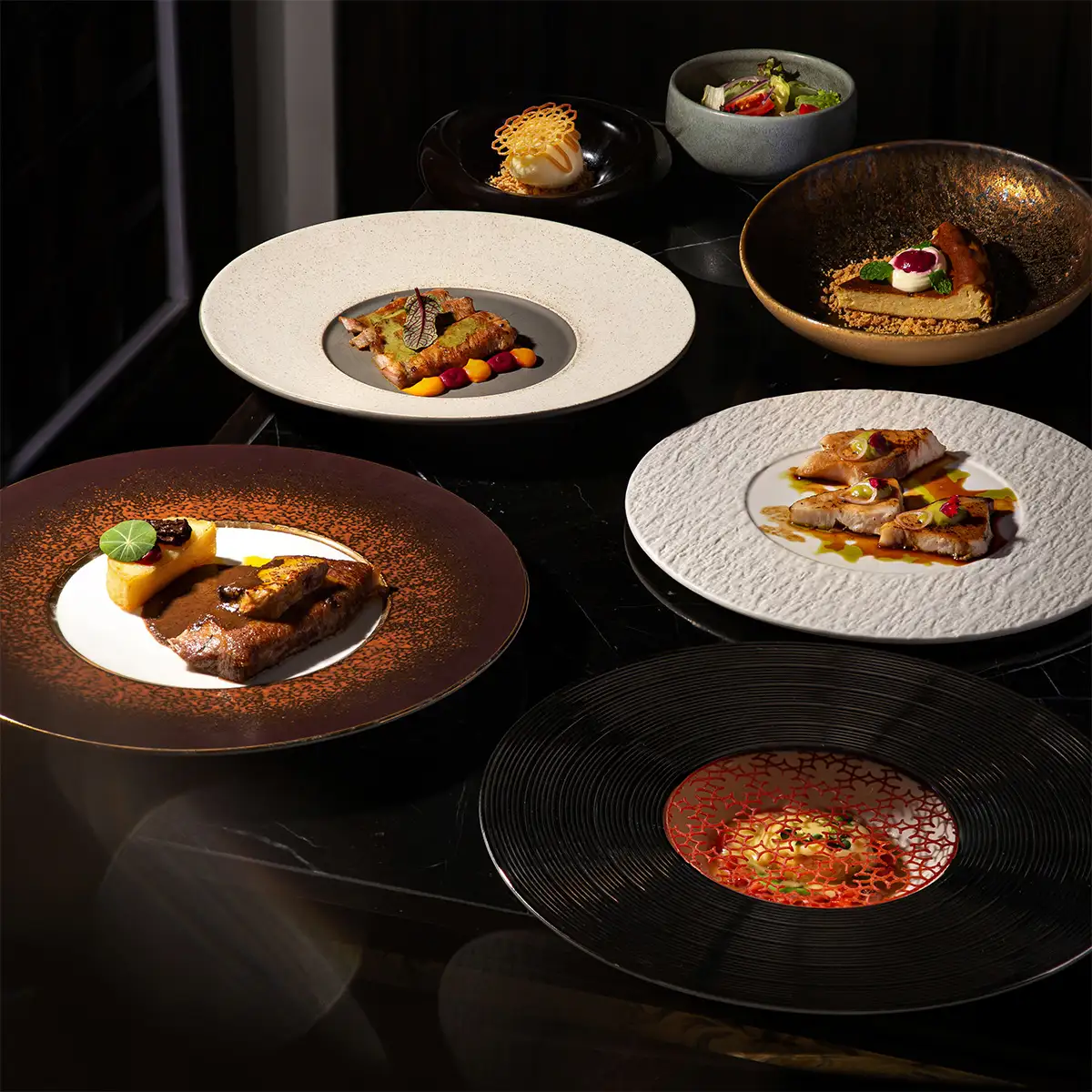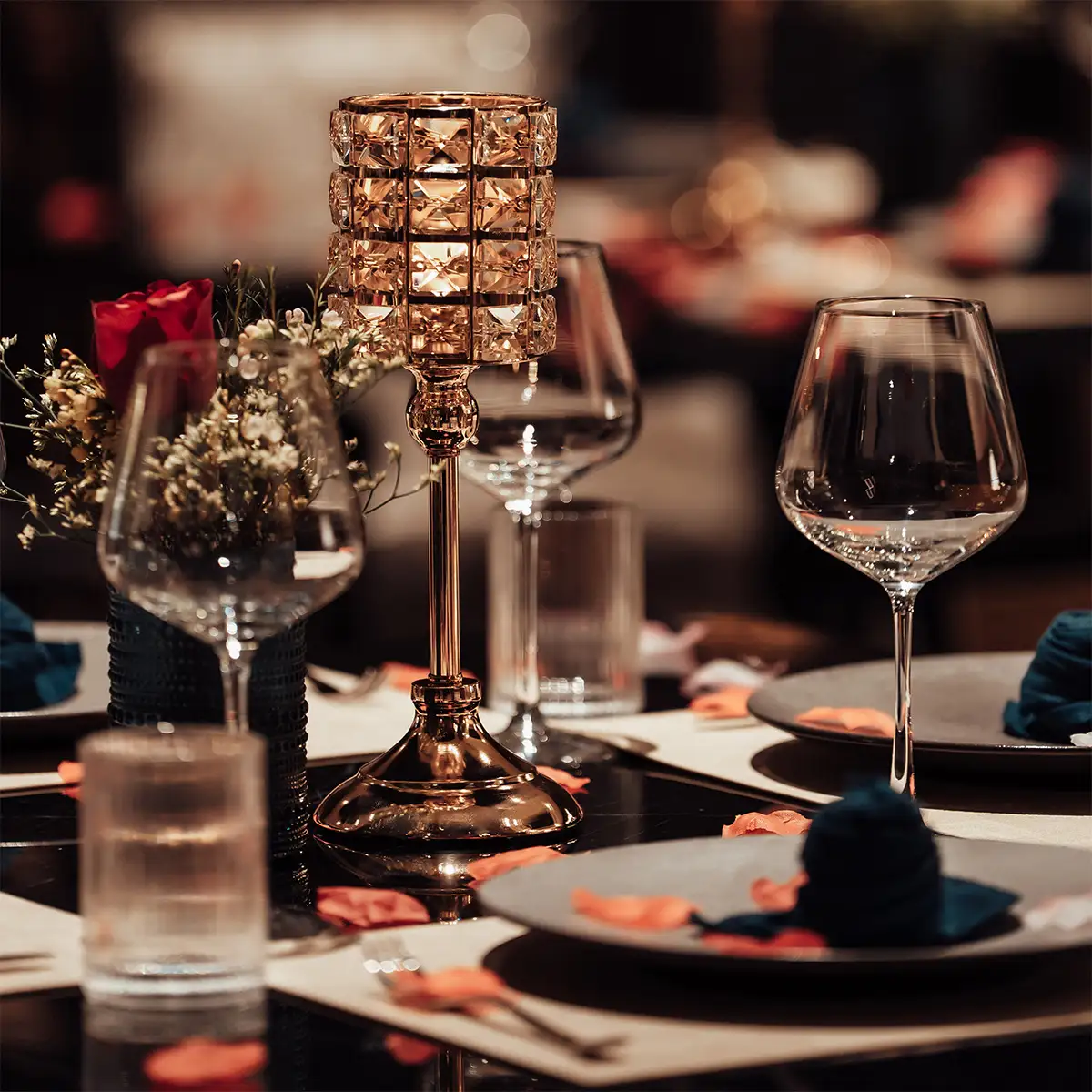The realm of fine dining has undergone a remarkable evolution, a journey from opulent banquets to the meticulously curated experiences of today. Central to this evolution is the "fine dining dish" itself – not merely food on a plate, but a carefully constructed embodiment of culinary artistry, innovation, and sensory delight. But what truly constitutes a "fine dining dish"? What elevates it beyond mere sustenance to become a focal point of an exceptional gastronomic event? This article aims to explore the intricate concept of the "fine dining dish," share insights into its creation, and ultimately, guide you toward experiencing these culinary masterpieces at Moca Dining, where every plate tells a story of passion and precision.
1. The concept of fine dining dish
A "fine dining dish" is far more than a collection of ingredients; it is a multi-sensory creation born from exceptional culinary skill, premium components, and artistic presentation, designed to offer a sophisticated and memorable eating experience. It represents the pinnacle of a chef's creativity and technical proficiency, often reflecting a distinct culinary philosophy.
The primary distinction between a "fine dining dish" and offerings from casual dining or fast food lies in several key areas: complexity, quality of ingredients, preparation techniques, presentation, and the overall experience it intends to deliver. Casual dining typically prioritizes comfort, familiarity, and speed, while fast food focuses on convenience and affordability. In contrast, a "fine dining dish" emphasizes intricate flavor profiles, innovative textures, and a visual aesthetic that engages the diner even before the first bite. There are many types of fine dining dishes, from delicate appetizers that awaken the palate to elaborate main courses and artfully constructed desserts, each demanding a unique approach and set of skills.
The historical development of the "fine dining dish" can be traced back to the codification of French haute cuisine by chefs like Auguste Escoffier in the late 19th and early 20th centuries. His emphasis on systematic technique, high-quality ingredients, and elegant presentation laid the groundwork for what we recognize today. Over decades, influences from global cuisines, technological advancements, and evolving diner expectations have continually reshaped the culinary masterpiece, leading to diverse styles like Nouvelle Cuisine, molecular gastronomy, and a contemporary focus on sustainable, ingredient-driven creations.
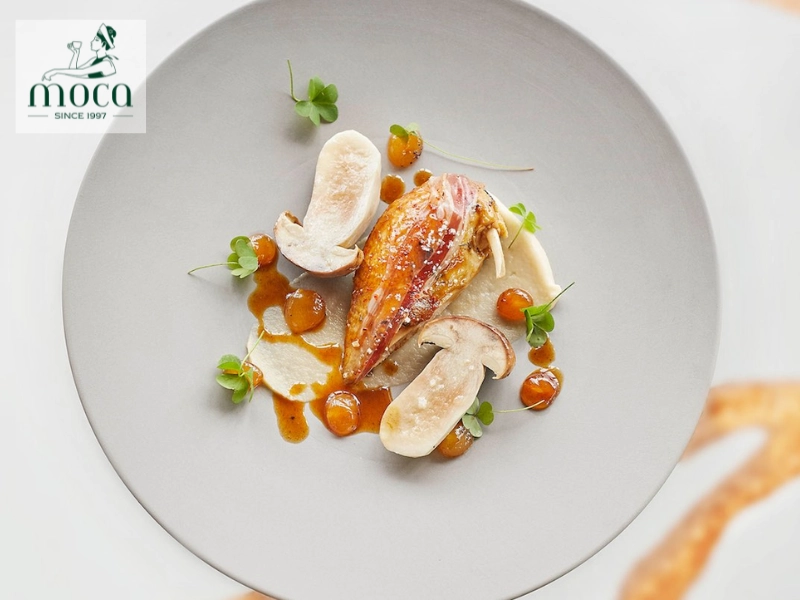
A fine dining dish is not just food—it’s a story told through flavor, technique, and artistry on a plate.
Learn more: Fine Dining Menu: A Culinary Journey at Moca Dining
2. Elements that create a perfect fine dining dish
The creation of a perfect "fine dining dish" is a symphony of carefully orchestrated elements, each contributing to the final, harmonious experience.
Ingredients:
The foundation of any exceptional fine dining dish is unequivocally the premium ingredients. This means sourcing the highest quality, freshest components, often with a clear and traceable origin. Chefs in fine dining establishments frequently build relationships with specific farmers, purveyors, and artisans to secure unique or seasonal items.
Increasingly, sustainability and ethical sourcing are paramount. This includes choosing line-caught fish over indiscriminately trawled options, utilizing whole animals to minimize waste (nose-to-tail cooking), and prioritizing ingredients from farms that practice responsible agriculture.
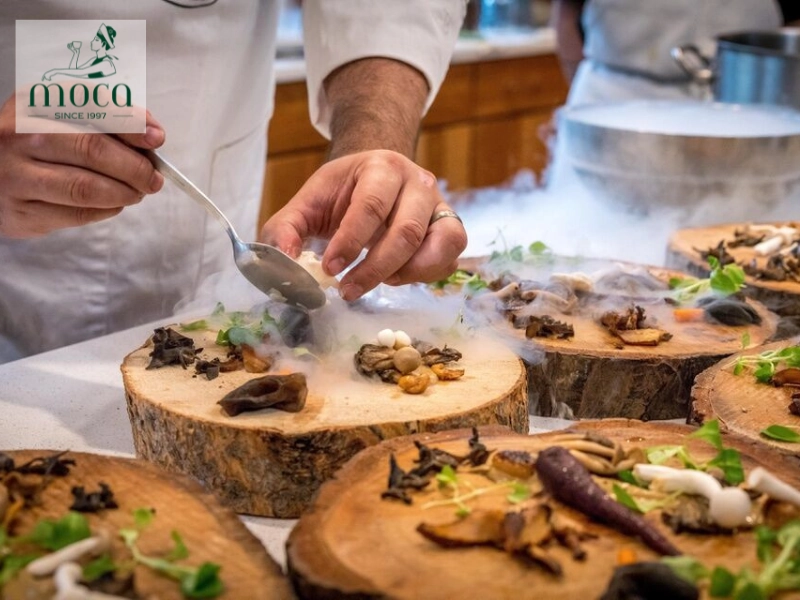
Every fine dining dish begins with exceptional ingredients—rare, seasonal, and ethically sourced, chosen to tell a story on the plate.
Preparation techniques:
The preparation of a "fine dining dish" is characterized by its meticulous and refined nature. Every step, from the initial butchering or vegetable prep to the final cooking process, is executed with precision and care. Advanced cooking methods are often employed alongside time-honored traditional techniques.
For instance, sous vide cooking, where ingredients are vacuum-sealed and cooked in a precisely temperature-controlled water bath, ensures unparalleled consistency and tenderness in proteins. Spherification, a technique from molecular gastronomy, allows chefs to create spheres with liquid centers, offering surprising bursts of flavor. Other signature techniques might include slow confits, intricate pastry work, multi-stage reductions for sauces, and fermentation to develop complex umami notes. The goal is to transform ingredients in ways that enhance their natural qualities and create unique textural and flavor combinations, leading to diverse types of fine dining dishes.

Precision and innovation define fine dining preparation — from sous vide perfection to molecular gastronomy artful surprises.
Presentation:
In fine dining, the eye eats first. The artistic food presentation of a "fine dining dish" is crucial. It's about creating a visually stunning composition that is both aesthetically pleasing and indicative of the flavors to come. This involves careful consideration of color, shape, texture, and negative space on the plate.
Chefs utilize specialized plating tools like precision tongs, squeeze bottles, and offset spatulas. Decorative elements are chosen thoughtfully – perhaps a delicate microgreen, an edible flower, a precisely piped sauce, or a dusting of a vibrant spice. However, every element on the plate must have a purpose, ideally contributing to the flavor profile, not just existing for visual appeal.
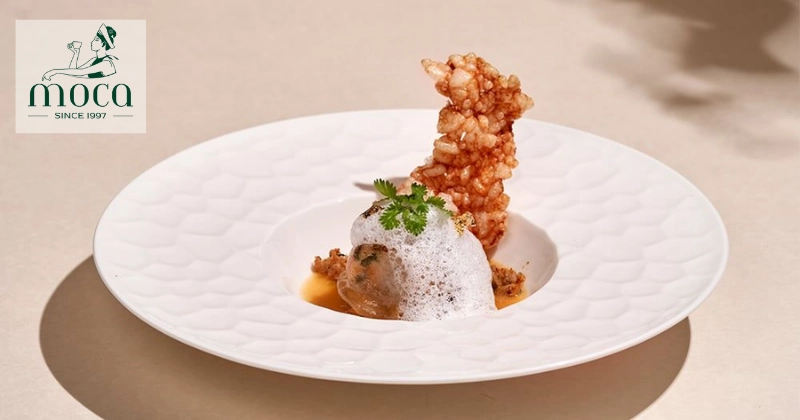
Art on a plate — where every detail, color, and texture tells a flavorful story.
Experience:
Ultimately, a "fine dining dish" aims to deliver a harmonious and memorable gastronomic experience. This is achieved through the masterful combination of flavors – balancing sweet, sour, salty, bitter, and umami – along with contrasting and complementary colors and textures (e.g., crispy with creamy, warm with cool).
The dish should take the diner on a journey, with flavors unfolding and evolving with each bite. Beyond the plate itself, the restaurant ambiance and impeccable service significantly contribute to the overall perception of the "fine dining dish." Attentive yet unobtrusive service, a comfortable and aesthetically pleasing environment, and knowledgeable staff who can explain the nuances of the dish all enhance the culinary journey. The entire experience is curated to make the guest feel special and to elevate the act of eating into a true event.

More than a meal — a curated journey of flavors, ambiance, and impeccable service.
Learn more: Fine Dining: Discover the Art of Elevated Cuisine
3. Examples of famous fine dining dishes
Across the globe, certain dishes have achieved iconic status, embodying the essence of the "fine dining dish."
- Beef Wellington (Classic European): This dish features a prime fillet of beef, often coated with pâté (typically foie gras) and duxelles (a finely chopped mushroom mixture), then wrapped in puff pastry and baked. Its success lies in the contrast of textures – the tender beef, rich pâté, earthy mushrooms, and crisp, golden pastry – and the complex, savory flavors. The technical skill required to cook the beef perfectly while ensuring the pastry is flawlessly baked is a hallmark of fine dining preparation.
- Lobster Thermidor (French Classic): A luxurious dish where cooked lobster meat is mixed with a rich, creamy sauce (often containing egg yolks, brandy, and mustard), returned to the lobster shell, sprinkled with cheese (typically Parmesan or Gruyère), and browned. The opulence of the lobster, combined with the decadent sauce and elegant presentation in its own shell, makes it a quintessential gourmet dish.
- Black Cod with Miso (Modern Japanese-Peruvian Fusion): Popularized by Chef Nobu Matsuhisa, this dish involves marinating black cod fillets in a sweet miso glaze for several days before broiling. The genius lies in its simplicity and the perfect balance of sweet and savory flavors, along with the incredibly flaky and moist texture of the cod. It showcases how high-quality ingredients and a well-executed technique can create an unforgettable "fine dining dish" without excessive complexity.
These examples highlight how a combination of superior ingredients, masterful technique, thoughtful presentation, and a memorable flavor profile contribute to the enduring appeal of various types of fine dining dishes.
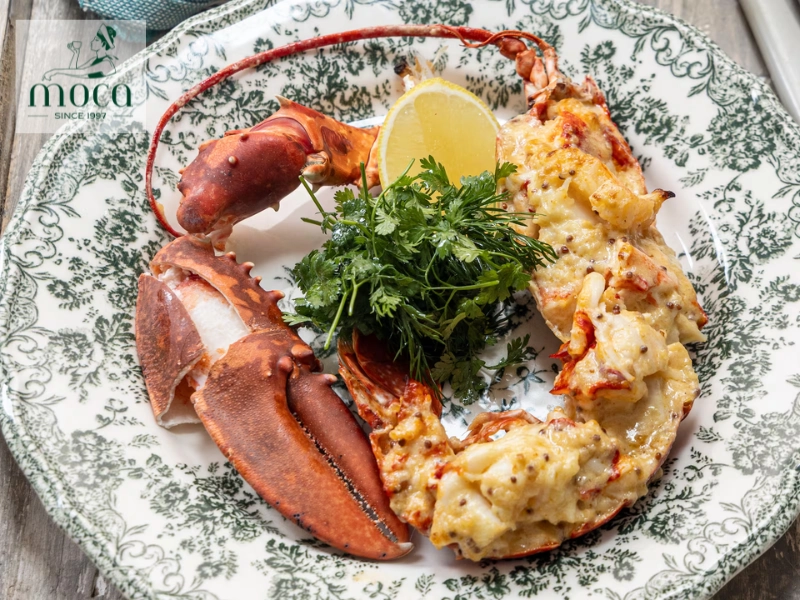
Classic elegance on a plate — where technique meets timeless flavor.
4. Fine dining dishes at Moca Dining
At Moca Dining, our culinary philosophy blends innovation with a deep respect for tradition, crafting fine dining dishes that delight the palate and engage the senses. One standout creation is our Pan-Seared Foie Gras with Sourdough Bread—a luxurious dish where buttery foie gras is expertly seared to achieve a crisp exterior and silky interior. It's paired with artisan sourdough, lightly toasted to provide a rustic contrast, and complemented by seasonal accompaniments that enhance the richness of the foie gras with bright acidity and texture.
Another signature dish is our Charcoal Lobster, a bold reinterpretation of a seafood classic. Fresh lobster is delicately grilled over charcoal to impart a subtle smokiness while preserving its natural sweetness. Served with a refined blend of herbs, infused oils, and a modern garnish, this dish exemplifies our approach to contemporary fine dining—where each element is thoughtfully prepared and artfully presented.
The creativity in these fine dining dishes lies in their refined execution, careful balance of flavors and textures, and elegant, modern presentation. They reflect our unwavering dedication to culinary excellence and offer just a glimpse into the unique dining experience that awaits at Moca Dining.
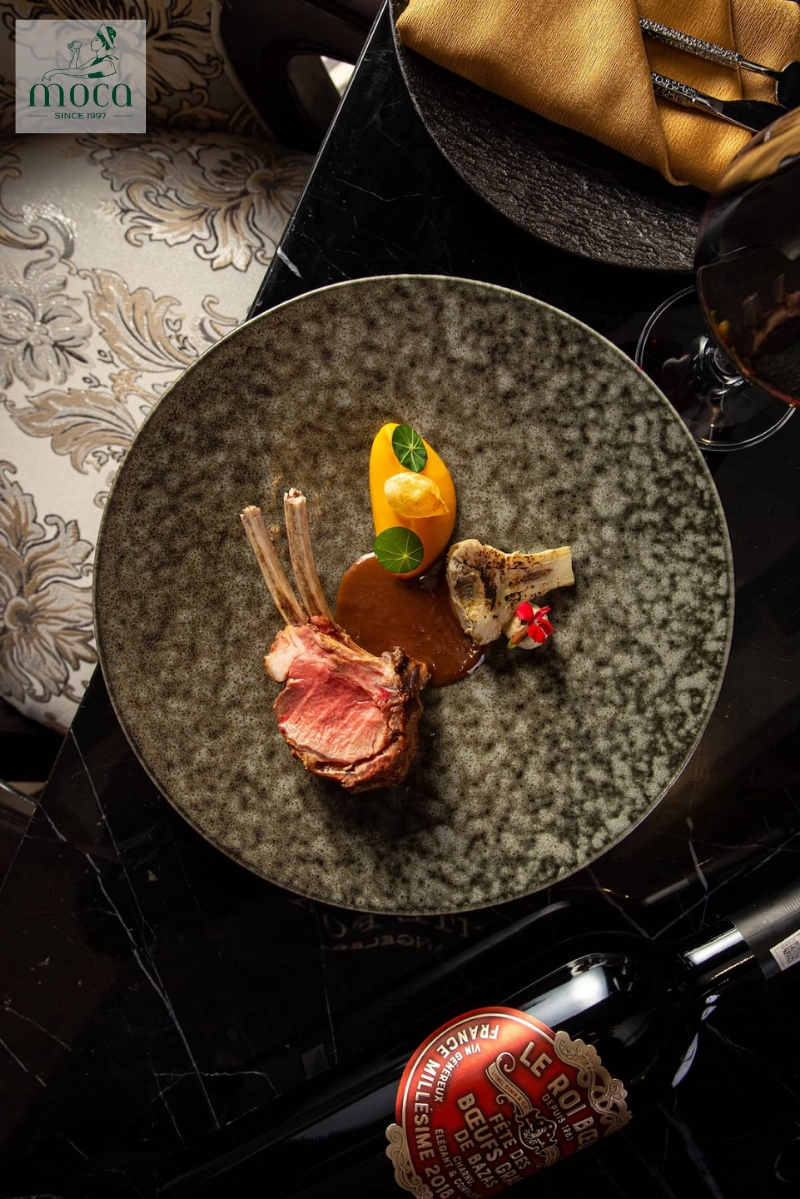
Where tradition meets innovation — exquisite dishes crafted to captivate every sense at Moca Dining.
A fine dining dish is more than a meal—it is a work of art, reflecting passion, precision, and the pursuit of perfection. From sourcing the finest ingredients to employing meticulous techniques and presenting each plate with elegance, every detail is crafted to create a memorable culinary experience. At Moca Dining, we honor this tradition by offering unique, upscale creations that engage all the senses. We invite you to join us and experience the artistry, dedication, and true essence of the fine dining dish.








